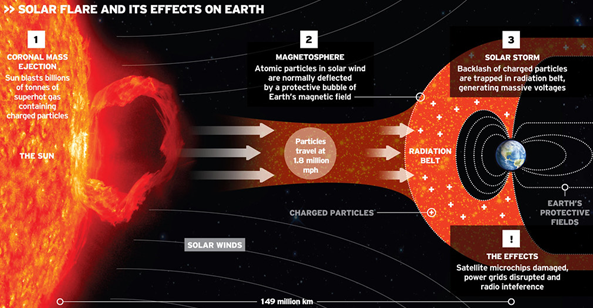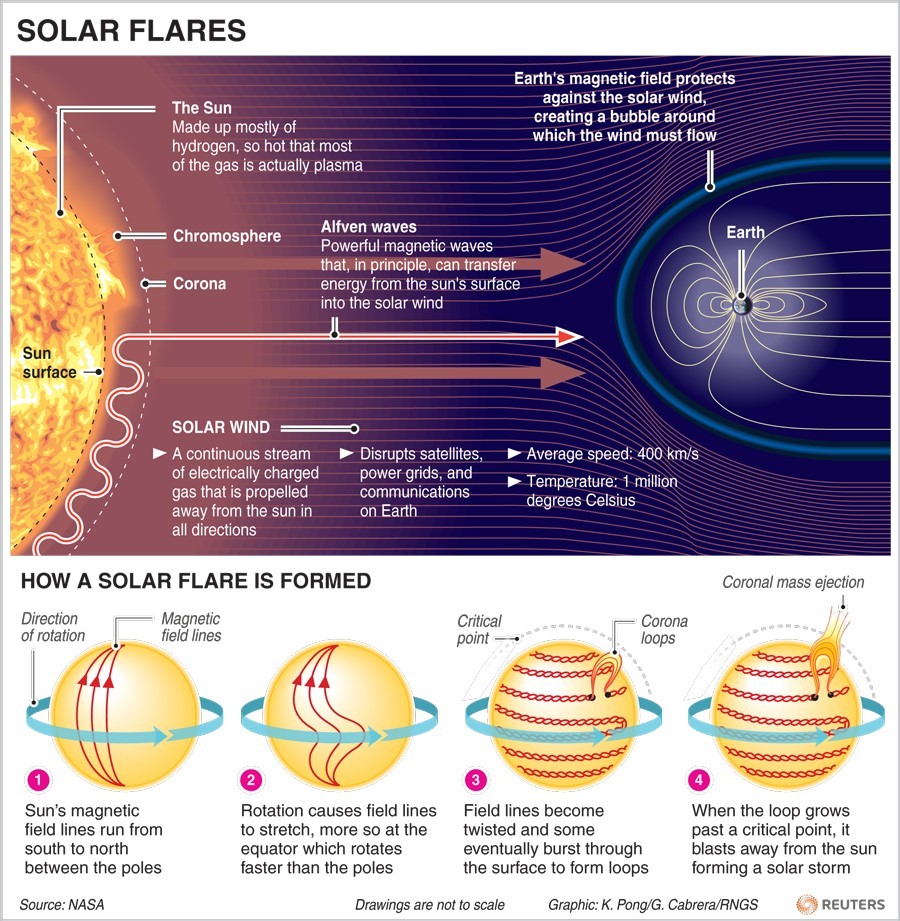Free Courses Sale ends Soon, Get It Now


Free Courses Sale ends Soon, Get It Now



Disclaimer: Copyright infringement not intended.
Context
Details
About Solar Flares

Impact of Solar Flares and CMEs on Earth
Not all solar flares reach Earth, but solar flares/storms, solar energetic particles (SEPs), high-speed solar winds, and coronal mass ejections (CMEs) that come close can impact space weather in near-Earth space and the upper atmosphere.
Categories
|
NOTE Solar flares are different from Coronal Mass Ejections' (CMEs), which were once thought to be initiated by solar flares. CMEs are huge bubbles of gas threaded with magnetic field lines that are ejected from the Sun over the course of several hours. Although some are accompanied by flares, it is now known that most CMEs are not associated with flares. |
|
PRACTICE QUESTION Solar flares are natural phenomena with significant implications for Earth and its technological infrastructure. Discuss the causes and consequences of solar flares and the measures that can be taken to mitigate their potential impact. How can international cooperation enhance preparedness for solar flare events?(250 words) |
© 2024 iasgyan. All right reserved